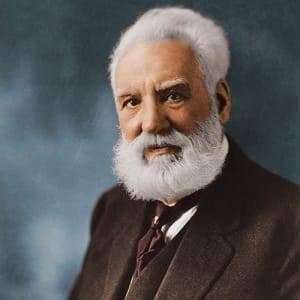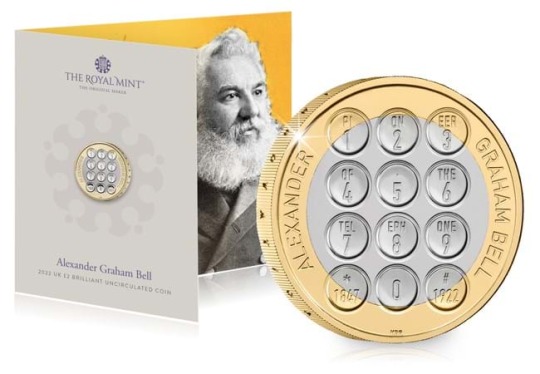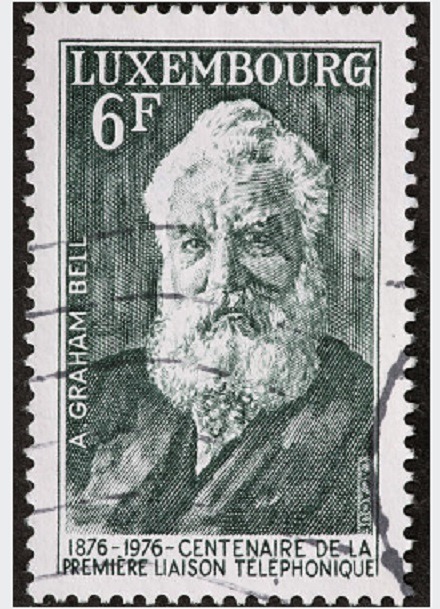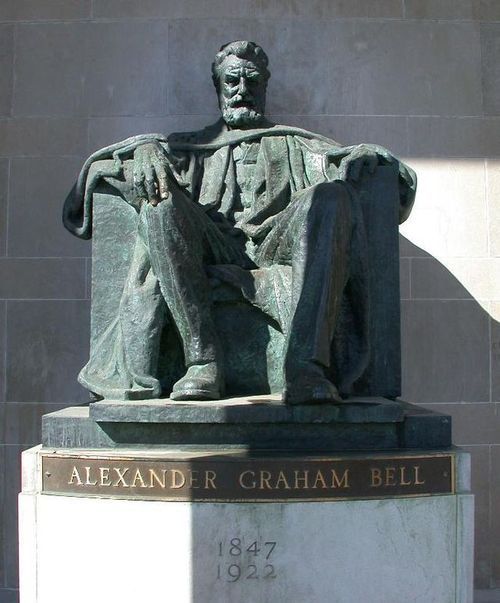#Charitable Gift Annuities
Text
🤝 Make your charitable giving count! Learn how to maximize your impact and deductions with tax-efficient strategies. Support your favorite causes while optimizing your financial situation. Giving back has never been so rewarding.
#Charitable Giving#Tax Benefits#Tax-Advantaged Accounts#Itemize Deductions#Appreciated Assets#Bunching Donations#Qualified Charitable Distributions#Charitable Gift Annuities#Impact Investing#AGI Limits#Tax Professional
0 notes
Text
How to Help Your Family Wealth Last for Generations
Suppose you have accumulated significant wealth and want to pass it on to your heirs. In that case, you may wonder how to ensure they use it wisely and responsibly. After all, you want to make sure your hard-earned money is well-spent by the next generation.
Fortunately, some strategies can help you preserve and protect your family's wealth for generations. Here are some tips to consider:

Communicate your values and expectations.
One of the most important things you can do is to have open and honest conversations with your family members about your values, goals, and expectations regarding money. Share your story of how you built your wealth, what challenges you faced, and what lessons you learned. Explain how you want your wealth to benefit your family and society. Encourage your heirs to ask questions, express their opinions, and share their aspirations.
Communicating your values and expectations can help your family develop a shared understanding and appreciation of your wealth. You can also foster a culture of trust, respect, and responsibility among your family members.

Educate and mentor your heirs.
Another critical strategy is to educate and mentor your heirs on financial literacy and stewardship. Teach them the basics of budgeting, saving, investing, and philanthropy. Help them develop the skills and knowledge to manage their finances and make intelligent decisions. Provide them with opportunities to practice and apply what they learn, such as giving them an allowance, involving them in family business decisions, or supporting their entrepreneurial ventures.
Educating and mentoring your heirs can help them become confident and competent in handling money. You can also instill in them a sense of purpose and gratitude for the wealth they inherit.

Establish a governance structure.
A third strategy is establishing a governance structure for your family's wealth. This involves creating a formal framework for how your wealth will be distributed, managed, and monitored over time. For example, you can set up a family office, a trust, a foundation, or a combination of these entities. Also, appoint a board of directors, a trustee, an advisor, or a committee to oversee the operations and performance of these entities.
By establishing a governance structure, you can ensure that your wealth aligns with your values and objectives. You can also provide clarity, accountability, and transparency for your family members.

Seek professional guidance.
A final strategy is to seek professional guidance from experts specializing in estate planning, tax planning, investment management, philanthropy, and family dynamics. These professionals can help you develop a comprehensive program that addresses your unique needs and goals. They can also help you navigate the complex legal, financial, and emotional issues that may arise when transferring wealth across generations.
By seeking professional guidance, you can benefit from the expertise and experience of others who have helped families like yours achieve their legacy goals. You can also avoid costly mistakes and pitfalls that could jeopardize your wealth or cause conflicts among your family members.

Prepare for an excellent wealth transfer.
According to some estimates, over $68 trillion will be transferred from baby boomers to their heirs over the next 25 years. This is the most sizable intergenerational transfer of wealth in history. If you are part of this excellent wealth transfer, you must prepare yourself and your family for this momentous event.
One way to prepare is to assess your estate plan regularly and update it as needed. Ensure that your wills, trusts, beneficiary designations, powers of attorney, health care directives, and records are current and reflect your wishes. Consider using strategies such as gifting, charitable giving, life insurance, annuities, or trusts to reduce taxes or protect assets from creditors or lawsuits.
Another way to prepare is to involve your heirs in the planning process. Share your intentions and expectations for how they will inherit and use the wealth with them. Discuss with them the potential challenges and opportunities that come with inheriting wealth. Help them understand their roles and responsibilities as stewards of the family legacy.
By preparing for the excellent wealth transfer, you can ensure that your wealth will be transferred smoothly and efficiently to the next generation. You can also help your family avoid common pitfalls such as overspending, mismanagement, or disputes.
This blog post helps you implement ways to help your family's wealth last for generations. If you need more assistance with this topic, please contact me at (816) 551 - 7961 or visit my website at www.legacywealthjoy.com. I would love to hear from you and help you achieve your legacy goals.
References
"Important Steps for Proper Retirement Planning." Personal & Business Banking - Banks in Delaware, www.wsfsbank.com/help-guidance/knowledge-center/important-steps-for-proper-retirement-planning. It was accessed on 20 July 2023.
3 notes
·
View notes
Photo






Scottish inventor Alexander Graham Bell died 100 year ago on August 2nd 1922.
We all know about Bell’s invention, I cover him three or four times a year , so I will cover his legacy in this post
As the telephone became more and more important, so Alexander Graham Bell became more and more famous. He received many awards, medals and honours for his invention.
There are many museums and parks named after him, and Bell’s house in America is preserved as a historic site.
The US Patent Office declared Bell the country's greatest inventors in 1936, which lead to the US Post Office granting a commemorative stamp honouring Bell as 'Famous Americans Series'
Scotland isn’t the only country that claims Bell as one of their own, Canadians voted him the 9th Greatest Canadian in a 2004 poll and the Americans also had him in the top 100 in a 2005 poll, although bizarrely the number one American was an actor called.....Ronald Regan! I suppose a similar poll in the US would have Donald Trump at one!
As Bell’s wealth grew, he used some of his money to set up laboratories and funds to help other scientists and young people. He also set up a centre for study and research into deafness which is still active today in Washington.
Another interesting wee fact I unearthed while researching this post is that Alexander studied geese, and the way the could fly, he was fascinated with flight and was rival to the Wright Brothers, he coached what was arguably the world’s most advanced aviation team of the early 20th century. By the time Bell’s team won the Scientific American Trophy on 4th July 1908, they had already accomplished more in just seven months than the Wright brothers did in seven year.
One thing I learned today that I didn’t know is that Alexander was second president of the National Geographic Society. The first president of the society was Gardiner Greene Hubbard, Bell’s father-in-law, who was one of the founders. The society remember him today with the Alexander Graham Bell Legacy Society which honours those who have included the National Geographic Society in their estate plans through a will, trust, charitable gift annuity, the society is one of the largest non-profit scientific and educational organizations in the world.
Because of the many awards Bell was receiving he decided to use the prize money to create funds as the Volta Fund and institutions as the Volta Laboratory Association, known as the Volta Laboratory and the Alexander Graham Bell Laboratory. He also was one of the founders of the American Institute of Electrical Engineers and was its president. He was also the Regent of the Smithsonian Institution.
Bell's image, and also those of his many inventions have graced paper money, coinage and postal stamps in numerous countries worldwide for many dozens of years.) In 1997 The Royal Bank of Scotland honoured him on their £1 note. The Royal mint this year brought out a commemorative £2 coin to mark a century since his death.
Oor Alexander has even popped up in an episode of the Simpsons!
Even though Alexander Graham Bell never completed his university program of his youth, he received many later on in his life, as well as LL.D.s (Doctorate of Laws), Ph.D.s, D.Sc. and M.D. Amongst them were his home town University of Edinburgh, St Andrews University and others like Oxford, Harvard and Heidelberg University in Germany.
The words the bel and the decibel, for measures of sound, are named after him.
After his funeral, on August 4th 1922, every telephone on the continent of North America was silenced as a mark of respect for him.
10 notes
·
View notes
Text
Different Types of a Fundraising Letter
Writing Fundraising letters are an essential tool for nonprofit organizations and charitable causes to solicit donations, support, and participation from individuals, businesses, and other entities. These letters come in various types, each serving a distinct purpose and targeting specific audiences. Here are different types of fundraising letters:

Appeal Letters: Appeal letters are perhaps the most common type of fundraising letter. They are typically sent out to donors, supporters, or prospects to request donations for a specific cause, campaign, or project. These letters often highlight the urgency or importance of the cause and provide compelling reasons for recipients to contribute financially. Appeal letters may focus on different themes such as emergency relief, community development, education, healthcare, or environmental conservation.
Thank-You Letters: Thank-you letters are crucial for acknowledging donors and expressing gratitude for their contributions. These letters are sent after receiving a donation and serve to recognize donors' generosity, reinforce their support for the organization's mission, and encourage future donations. Thank-you letters often personalize the donor's impact and may include stories, testimonials, or updates on how their donation is making a difference.
Event Invitation Letters: Event invitation letters are used to invite individuals or businesses to participate in fundraising events such as galas, charity auctions, golf tournaments, or benefit concerts. These letters provide details about the event, including the date, time, location, agenda, and any special guests or activities planned. Event invitation letters aim to generate excitement and encourage attendance by highlighting the event's purpose, benefits, and impact on the cause.
Membership Renewal Letters: Membership renewal letters are targeted at existing members of an organization or program to encourage them to renew their membership for another term. These letters typically outline the benefits of membership, such as access to exclusive content, discounts, or events, and remind recipients of the value they receive from their membership. Membership renewal letters may also include incentives or special offers to incentivize prompt renewal.
Matching Gift Letters: Matching gift letters are designed to leverage corporate matching gift programs, where employers match their employees' charitable contributions to eligible nonprofit organizations. These letters inform donors about the availability of matching gifts from their employers and provide instructions on how to initiate the matching gift process. Matching gift letters emphasize the impact of doubling or even tripling the value of donors' contributions through matching gifts.
Campaign Progress Updates: Campaign progress update letters are used to inform donors and supporters about the progress of a fundraising campaign or initiative. These letters provide updates on fundraising milestones, achievements, and goals reached, as well as insights into how donations are being utilized to further the organization's mission. Campaign progress update letters help maintain donor engagement, transparency, and accountability throughout the fundraising process.
Legacy Giving Letters: Legacy giving letters are aimed at donors interested in leaving a lasting legacy through planned giving or bequests in their wills. These letters educate donors about the various planned giving options available, such as bequests, charitable annuities, trusts, or life insurance policies, and encourage them to consider including the organization in their estate plans. Legacy giving letters emphasize the impact of planned gifts in sustaining the organization's work for future generations.
Special Appeal Letters: Special appeal letters are targeted at specific segments of donors or supporters based on their interests, preferences, or giving history. These letters may focus on particular programs, projects, or initiatives that align with donors' interests or past contributions. Special appeal letters tailor the messaging and ask to resonate with the targeted audience, increasing the likelihood of donor engagement and support.
Holiday Giving Letters: Holiday giving letters capitalize on the spirit of generosity and goodwill during festive seasons such as Christmas, Thanksgiving, or New Year's. These letters appeal to donors' sentiments and encourage them to make charitable contributions as part of their holiday celebrations. Holiday giving letters often emphasize the importance of giving back to the community and making a positive impact during the holiday season.
Reactivation Letters: Reactivation letters are aimed at lapsed donors or supporters who have not contributed to the organization in some time. These letters seek to re-engage lapsed donors by reminding them of their past support, updating them on recent accomplishments or initiatives, and inviting them to renew their commitment to the cause. Reactivation letters may include special incentives or offers to encourage donors to resume their giving.
In summary, fundraising letters come in various types, each serving a specific purpose in engaging donors, supporters, and prospects, and soliciting contributions for nonprofit organizations and charitable causes. Whether appealing for donations, expressing gratitude, inviting participation in events, or promoting planned giving opportunities, fundraising letters play a vital role in cultivating donor relationships, generating support, and advancing the mission of charitable organizations.
youtube
SITES WE SUPPORT
Print Mail Letters & Letter API – Wordpress
SOCIAL LINKS
Facebook
Twitter
LinkedIn
Instagram
Pinterest
0 notes
Text
Are Charitable Gift Annuities a Good Idea?
There is not one answer to the question “Are charitable gift annuities a good idea” since each person’s financial situation is different. It is impossible to make a general recommendation; however, there are some definite benefits to investing money in a charitable gift annuity.

Generally, donors will qualify for an immediate tax deduction for the gift portion of the charitable gift annuity, and if the gift is funded with appreciated stock or mutual fund shares, annuitants may also avoid some capital gains tax. A charitable gift annuity provides a fixed income for life because it does not fluctuate with the stock market. A portion of the income is often tax-free as well.
A charitable gift annuity is simple to set up. Unlike a trust, it can be established without a lawyer, but consulting with an advisor is always a good idea. Using part of an estate to fund a charitable gift annuity removes that piece from the taxable estate, which could then help reduce or avoid estate taxes.[1]
Most importantly, the gift portion of a charitable gift annuity has a major impact on GFA World’s ministries in Africa and Asia. Receiving generous donations helps ensure GFA can continue to share the love and grace of Jesus with those who need it most. With programs to help in many areas― from disaster relief to needed medical attention, from ministering to widows and orphans to providing mosquito nets―any gift or donation makes a huge difference.[2]

Since GFA was founded over 40 years ago, we have relied on faithful giving to share the love of Christ with so many who’ve not heard the name of Christ even once.
Child sponsorships help us provide vital assistance to at risk children, like education assistance, nutritious food, healthcare and hygiene training for children in some of the world’s poorest areas.
National missionaries, vital workers who know the people and culture already, also have sponsors who provide funding for the resources and training to work and minister where no one else is.
Donations can provide income-generating gifts of farm animals or sewing machines that can lift families out of the cycle of poverty. Donations can also provide for drilling Jesus wells to provide clean water, and constructing proper sanitation facilities for those in need.
Click here, to read more about this article.
Click here, to read more blogs in Gospel for Asia.Net
#Abject Poverty#Absolute Poverty#Bridge of Hope#Generational Poverty#GFA-Supported Children’s Ministry#GFA-Supported Workers#Gospel for Asia#Poverty Alleviation#Poverty Alleviation Program
0 notes
Text
Exploring Legacy Trusts: Structuring Trusts to Preserve Your Legacy
In the realm of estate planning, one of the most powerful tools available for preserving your legacy is the establishment of legacy trusts. These specialized trusts are designed not only to protect your assets but also to ensure that your values, traditions, and wishes endure for generations to come. Let's delve into the world of legacy trusts and explore how they can help structure your estate plan to preserve your legacy.
At its core, a legacy trust is a type of irrevocable trust specifically crafted to preserve your wealth and values while minimizing tax liabilities and protecting assets from creditors. Unlike other trusts that may focus solely on financial matters, legacy trusts go beyond monetary concerns, aiming to safeguard your family's heritage, traditions, and philanthropic endeavors.
One of the key features of a legacy trust is its flexibility. It allows you to dictate how your assets are distributed and managed long after you're gone, ensuring that your wishes are carried out according to your precise instructions. Whether you want to provide ongoing support for family members, fund educational endeavors, or contribute to charitable causes, a legacy trust can be tailored to align with your goals and values.
Another significant advantage of legacy trusts is their ability to shield assets from potential threats such as lawsuits, creditors, and divorces. By placing your assets into an irrevocable trust, you effectively remove them from your personal ownership, making them less vulnerable to legal claims or financial losses. This added layer of protection can provide invaluable peace of mind, knowing that your hard-earned wealth is safeguarded for the benefit of your loved ones.
Moreover, legacy trusts offer valuable tax benefits that can help maximize the amount of wealth transferred to future generations. By leveraging various estate planning strategies, such as generation-skipping transfers and grantor-retained annuity trusts, you can minimize estate and gift tax liabilities, allowing more of your assets to be passed down to your heirs intact. This can have a significant impact on the long-term financial security of your family and help preserve your legacy for years to come.
Additionally, legacy trusts provide a level of privacy that may not be available with other estate planning vehicles. Unlike wills, which are subject to public probate proceedings, trusts operate outside of the probate process, keeping your financial affairs confidential and shielding your family from unnecessary scrutiny. This confidentiality can be especially beneficial for families who wish to maintain their privacy and avoid potential disputes or challenges to their estate plan.
In essence, a legacy trust serves as a powerful tool for shaping your family's future and leaving a lasting impact on the world. By structuring your estate plan around the principles of preservation, protection, and purpose, you can ensure that your legacy endures for generations to come.
In conclusion, experts providing legacy estate planning services in Fort Worth TX offer a comprehensive solution for preserving your wealth, values, and traditions while minimizing tax liabilities and protecting assets from potential threats.
0 notes
Text
Charitable Gift Annuities: Benefit Yourself and Your Favorite Charity
(Kiplinger) - Donating to charitable gift annuities can provide you with tax breaks now and income later. Here’s what you need to know.
Melissa Lynn Potts, C.P.A.
0 notes
Text
Mount Sinai South Nassau Receives $5 Million Donation
Mount Sinai South Nassau has received the largest single gift in the hospital’s history – a $5 million pledge from The Louis Feil Charitable Lead Annuity Trust to name the hospital’s new patient care pavilion. The new four-story, 100,000-square-foot building, scheduled to open in spring 2024, will be named the Feil Family Pavilion. It will […]
Original source:…
View On WordPress
#current trends and issues in nursing#current trends in nursing#future trends in nursing#new trends in nursing#nursing today transition and trends#registered nurse definition#trends and issues in nursing#Trends in nursing#trends in nursing education
0 notes
Text
Tax Implications of Charitable Donations
What are the tax implications of charitable donations made through an estate plan, trust, and/or living trust?
Charitable donations made through an estate plan, trust, or living trust can have different tax implications depending on the type of donation and the structure of the estate plan or trust. Some common types of charitable donations that may be made through an estate plan or trust include:
Charitable Bequests
A charitable bequest is a gift of property or assets made through a will or living trust. Bequests can be made to a charitable organization or to a charitable remainder trust, which is a type of trust that holds assets for the benefit of a charitable organization. Bequests are generally tax-deductible for the donor's estate.
Charitable Lead Trusts
A charitable lead trust is a type of trust that makes payments to a charitable organization for a specified period of time, after which the remaining assets are transferred to non-charitable beneficiaries (such as family members). Donors can receive a charitable deduction for the value of the payments made to the charitable organization. Still, they may also have to pay gift or estate tax on the value of the assets transferred to the non-charitable beneficiaries.
Charitable Remainder Trusts
A charitable remainder trust is a type of trust that holds assets for the benefit of a charitable organization and pays the remainder to non-charitable beneficiaries (such as family members) after a specified period of time. Donors can receive a charitable deduction for the value of the assets transferred to the trust, but they may also have to pay gift or estate tax on the assets transferred to the non-charitable beneficiaries.
Charitable Gift Annuities
A charitable gift annuity is a contract between a donor and a charitable organization in which the donor makes a charitable gift, and the organization agrees to pay a fixed annuity to the donor (or another beneficiary) for life. Donors can receive a charitable deduction for the value of the gift, but they may also have to pay income tax on the annuity payments.
It is important to consult with a tax professional or an estate planning lawyer to understand the tax implications of charitable donations made through an estate plan, trust, or living trust. These donations can be a useful tool for achieving both charitable and tax planning goals, but it is important to carefully consider the potential tax consequences before making any charitable gifts.
youtube
Estate Planning Attorney Free Consultation In Utah
If you need legal help, call this law firm and talk with our experienced attorneys about estate planning for a FREE consultation.
We help you with Estate Planning, Wills, Trusts, Power of Attorney, Health Care Directive, Estate Administration, Probate and More
Parklin Law - Estate Planning
5772 W 8030 S, # N206
West Jordan UT 84081
(801) 618-0699
40.605070, -112.027530
Disclaimer: This is not legal advice and is simply an answer to a question and that if legal advice is sought to contact a licensed attorney in the appropriate jurisdiction.
#Parklin Law#Estate Planning Attorney#Estate Planning Lawyer#Estate Plan Attorney Near Me#Estate Plan Lawyer Utah#Youtube
1 note
·
View note
Text

The Tribe of David Endowment Fund is a permanent amount of capital invested for growth and income. The assets of the fund are set aside and invested, so that only the interest of the principal is made available for funding church programs and ministries.
The purpose of the fund is to establish a permanent reserve, the principal of what shall be preserved in perpetuity, and the interest income shall be used to extend the programs of the church. It also provides a means for you to express special thanks to God for blessings and gifts you have received and allows you to return a portion of accumulated assets of your life’s work.
The funds grow through careful investing and appreciation generated through investments. The funds also grow through gifts, memorials and bequests.
Tribe of David is a community who knows the importance of planning and investing to assure the stability, vitality and future of our church. Your contribution to the Endowment Fund of Tribe of David is an expression of faith, generosity and of gratitude for all the blessings from God.
Tribe of David Endowment Committee shall consist of not less than Five members selected by the Pastor and Joint Board. The committee shall be responsible for encouraging the membership to make contributions to the Endowment Fund. The committee has the responsibility to solicit gifts, and to manage funds. Members of the committee will serve a three-year term and may serve two consecutive terms.
Gifts of most any kind and size are welcomed by the fund, however some may be restricted by church policies.
Yes. Gifts to a special memorial or special event are given in recognition of a person’s life or celebration of an event in a person’s life.
Yes. They would be received and treated as other gifts are received.
Endowments are funded through outright gifts, pledges, donations of securities or other non-cash assets as well as through a variety of planned gifts. These gifts include gifts in your will, charitable gifts annuities, beneficiary designations in retirement plans, financial accounts, insurance policies and gifts of property.
A gift to the Tribe of David Endowment Fund reflects our faith and love in Christ. As a Christian steward, we give back to God as a way of life out of the abundance from which God has gifted us.
Yes! Without a will, the laws of the state will determine who will receive your assets and who will manage your estate. As a result, the state may not include all the persons or charities that you would like to benefit. A will allows you to appoint a guardian for you minor children, choose a representative to carry out your wishes, and determine the final distribution of your estate assets. Giving through a will and through beneficiary designations are some of the simplest ways to make a planned gift. You may state in your will the amount or percentage of assets that are to pass to the church. You receive an estate tax deduction for the gift. There is no limit on the amount that can be deducted for estate tax purposes.
The Endowment Committee invites you to inquire further if you are interested in any area of the Tribe of David Endowment Fund or charitable giving to the church. Please contact the (TODCFB) Office
0 notes
Text
Pine grove financial calculators

PINE GROVE FINANCIAL CALCULATORS SOFTWARE
PINE GROVE FINANCIAL CALCULATORS DOWNLOAD
PINE GROVE FINANCIAL CALCULATORS FREE
Rowe Price has a number of retirement-, tax- and estate-planning tools and worksheets at its Tools and Calculators web page.Ĭhoose to Save has many calculators for consumer use addressing savings-related issues, including those pertaining to college funding, automotive financing, budgeting for expenses and saving, credit card rate and rebate evaluation and home mortgage analysis.
PINE GROVE FINANCIAL CALCULATORS SOFTWARE
Time Value Software TCalc Financial Calculators is a robust collection of online calculators for personal financial planning, including future/present value, savings, loans, leasing, etc. It offers planning tools (click on "Planning Tools") such as: a document assembly checklist information and forms for annuity calculations life expectancy tables statutory power of attorney and medical treatment forms worksheets for income tax planning retirement planning tables and forms and, from the Internal Revenue Service, income, estate and generation-skipping tax forms.įiscal Agents Financial Tools offers a variety of retirement, mortgage and loan calculators as well as personal planners all apply Canadian methodology, but many of the calculators are useful to U.S. Social Security Administration provides online calculators for both basic and detailed calculations of Social Security benefits available to an individual a more detailed calculator can be downloaded for free.Īdvisortek has financial-planning calculators for rates of return, portfolio evaluation, retirement and investment diversification.ī furnishes a variety of online calculators, including: mortgages small business (profit margins and internal ratios) credit cards and CDs (laddering, interest, investments and savings goals).ĬCH Financial Planning Toolkit presents a variety of online financial calculators including mortgage, loan, business, investment and retirement calculators. It also addresses remaining balance, balloon payment, accelerated payment and refinancing. This program calculates compound interest, including days between dates.
PINE GROVE FINANCIAL CALCULATORS DOWNLOAD
Pine Grove Software offers the Loan*Calculator!Plus for Windows ( download it from this site). It does sophisticated loan amortization calculation and amortization schedule preparation, including both fixed rate and adjustable rate mortgages. Time Value Software has the ultimate online amortization program. includes various online calculators to compute mortgage, mortgage refinancing and consolidation, financial and basic amortization. Interest.Com Mortgage and Financial Calculators presents a variety of online and shareware loan and mortgage calculators for various loan situations. It includes calculators for charitable gift annuities, CLTs, CRATs and CRUTs.Īssetstream provides an advanced calculator that computes the tax advantages of donating appreciated stock to charity, taking into account both federal and state income tax rates.Ĭharity Navigator provides a basic income tax giving calculator for donors in various tax brackets and helps to compute net cost and tax savings from charitable contributions.
PINE GROVE FINANCIAL CALCULATORS FREE
PhilantroCalc for the Web is free via Ashland University as well as other charitable organizations' websites. University of Georgia Planned Giving Calculator does basic calculations for charitable trusts, gift annuities and pooled-income funds. You'll find a free, online planned gifts calculator for professionals that enables you to make calculations for charitable remainder annuity trusts (CRATs), charitable remainder unitrusts (CRUTs) and charitable lead trusts (CLTs). Just click on "GiftLaw Calculator" on the left side menu. As such, it can be found on the Texas A & M Foundation website, which also has other planned giving resources. GiftLaw Calculator, from Crescendo Interactive, Inc., is available for inclusion in websites of planned giving organizations. Savings Bond Pro(R) is its new savings bond pricing system for finding the valuation of savings bonds by financial institutions, and value tables. Its Savings Bond Wizard™ software helps you to inventory and value United States Savings Bonds. The Bureau of Public Debt has the Online Savings Bond Calculator for computing the value of EE, E, I bonds and Savings Notes. (In either Windows XP or the Macintosh, click on any blue, underlined text to launch the website described.) Calculators and Internet resources relating to pension plans, individual retirement accounts (IRAs) and Roth IRAs will be addressed in the next newsletter. Also included are resources that you may wish to suggest to clients for their personal use. How many times a day could you use quick, standalone calculations that would spare you having to launch larger, more comprehensive estate or financial planning programs? Here are a few examples of such calculating resources, arranged by category. You may be surprised at how many calculating resources that could be of use in your practice are available free on the Internet.

0 notes
Text
How to Help Your Family Wealth Last for Generations
Suppose you have accumulated significant wealth and want to pass it on to your heirs. In that case, you may wonder how to ensure they use it wisely and responsibly. After all, you want to make sure your hard-earned money is well-spent by the next generation.
Fortunately, some strategies can help you preserve and protect your family's wealth for generations. Here are some tips to consider:
Communicate your values and expectations.
One of the most important things you can do is to have open and honest conversations with your family members about your values, goals, and expectations regarding money. Share your story of how you built your wealth, what challenges you faced, and what lessons you learned. Explain how you want your wealth to benefit your family and society. Encourage your heirs to ask questions, express their opinions, and share their aspirations.
Communicating your values and expectations can help your family develop a shared understanding and appreciation of your wealth. You can also foster a culture of trust, respect, and responsibility among your family members.
Educate and mentor your heirs.
Another critical strategy is to educate and mentor your heirs on financial literacy and stewardship. Teach them the basics of budgeting, saving, investing, and philanthropy. Help them develop the skills and knowledge to manage their finances and make intelligent decisions. Provide them with opportunities to practice and apply what they learn, such as giving them an allowance, involving them in family business decisions, or supporting their entrepreneurial ventures.
Educating and mentoring your heirs can help them become confident and competent in handling money. You can also instill in them a sense of purpose and gratitude for the wealth they inherit.
Establish a governance structure.
A third strategy is establishing a governance structure for your family's wealth. This involves creating a formal framework for how your wealth will be distributed, managed, and monitored over time. For example, you can set up a family office, a trust, a foundation, or a combination of these entities. Also, appoint a board of directors, a trustee, an advisor, or a committee to oversee the operations and performance of these entities.
By establishing a governance structure, you can ensure that your wealth aligns with your values and objectives. You can also provide clarity, accountability, and transparency for your family members.
Seek professional guidance.
A final strategy is to seek professional guidance from experts specializing in estate planning, tax planning, investment management, philanthropy, and family dynamics. These professionals can help you develop a comprehensive program that addresses your unique needs and goals. They can also help you navigate the complex legal, financial, and emotional issues that may arise when transferring wealth across generations.
By seeking professional guidance, you can benefit from the expertise and experience of others who have helped families like yours achieve their legacy goals. You can also avoid costly mistakes and pitfalls that could jeopardize your wealth or cause conflicts among your family members.
Prepare for an excellent wealth transfer.
According to some estimates, over $68 trillion will be transferred from baby boomers to their heirs over the next 25 years. This is the most sizable intergenerational transfer of wealth in history. If you are part of this excellent wealth transfer, you must prepare yourself and your family for this momentous event.
One way to prepare is to assess your estate plan regularly and update it as needed. Ensure that your wills, trusts, beneficiary designations, powers of attorney, health care directives, and records are current and reflect your wishes. Consider using strategies such as gifting, charitable giving, life insurance, annuities, or trusts to reduce taxes or protect assets from creditors or lawsuits.
Another way to prepare is to involve your heirs in the planning process. Share your intentions and expectations for how they will inherit and use the wealth with them. Discuss with them the potential challenges and opportunities that come with inheriting wealth. Help them understand their roles and responsibilities as stewards of the family legacy.
By preparing for the excellent wealth transfer, you can ensure that your wealth will be transferred smoothly and efficiently to the next generation. You can also help your family avoid common pitfalls such as overspending, mismanagement, or disputes.
This blog post helps you implement ways to help your family's wealth last for generations. If you need more assistance with this topic, please contact me at (816) 551 - 7961 or visit my website at www.legacywealthjoy.com. I would love to hear from you and help you achieve your legacy goals.
References
"Important Steps for Proper Retirement Planning." Personal & Business Banking - Banks in Delaware, www.wsfsbank.com/help-guidance/knowledge-center/important-steps-for-proper-retirement-planning. It was accessed on 20 July 2023.
0 notes
Text
Did you know you can donate your life insurance to charity? Here are four ways to do it
If your policy has limited use for you, you can maximize its impact by donating to a cause you care about

Life insurance can be an important part of protecting your family and their future. There are certain instances when you may no longer require your insurance policy. Maybe your dependents have reached an age where they no longer rely on you, or your financial status has grown to a point where a life insurance policy is no longer of great use.
Instead of cancelling your policy outright, you might consider donating your life insurance policy to a charity that is important to you. Not only are you able to receive a tax benefit for your donation, but you can also know that you’re continuing to support a cause that’s important to you.
There are four ways to donate your life insurance benefit to a charity, each of which has specific implications for you, your estate and your taxes.
Charity becomes the owner of a life insurance policy
If you have a term-life policy – that is, a policy that covers you for a certain number of years – that you’re not going to renew, gifting the benefit can optimize the investment you’ve made over the years.
Making the charity the irrevocable owner of your policy has a lot of advantages.
The main one being that you’ll receive a tax receipt to use in the year of the donation. The amount of this receipt is based on the fair market value of your policy which refers to the current value of your policy, taking into account factors like your age and health. This is generally greater than the cash surrender value (CSV), which is the value after a surrender fee is deducted.
If you make a charity the owner of your life insurance policy, they will be responsible for paying any ongoing premiums. If you choose to continue paying the premiums yourself, you can receive a tax receipt for the payments you make.
If you’re unable to claim the entirety of the tax credit in that year, the good news is you can carry it forward for up to five years.
When the policy matures, your chosen charity will receive the full benefit of your policy.
Name a charity as beneficiary
If you want your estate to have the benefit of a charitable tax receipt, naming the charity as the beneficiary in your life insurance policy is the optimal way to go.
In this instance, you will retain the ownership of the policy, and are free to name as many beneficiaries as you want. If the charity you name as a beneficiary isn’t irrevocable, that is they are not permanent, you can always remove them at a later date.
Upon your passing, the charity you have named will receive your policy’s benefit, while your estate will receive a tax receipt for the donation amount.
Take out a new policy in the name of the beneficiary
Another way in which to donate a life insurance policy’s death benefit to a charity is by taking out a new policy and naming the charity as the beneficiary from the start.
In this case you will be responsible for paying the premiums on a year-by-year basis. At the same time, each year you will receive a tax receipt from the charity to use against your income.
Charitable insured annuity
Annuities provide steady streams of income for individuals when they retire. You pay into it in advance, then will receive a designated amount as an income when the annuity period starts.
When you purchase a charitable insured annuity, you use part of the annuity’s income stream to purchase a life insurance policy. This life insurance policy will have the charitable organization as the named beneficiary.
Each year, part of your annuity will pay for the premiums on your life insurance policy. But because the policy has a charity named as a beneficiary, you can receive a tax receipt for the amount of your premiums.
This method gives you the benefit of receiving a steady retirement income and making regular and continued charitable donations.
By gifting your life insurance benefit to a charity, you can help an organization you support to continue to grow and thrive even after you’re gone. Speak to your financial advisor or charity of choice to find out what options are available to you.
#lifehealthadvisors #areteautomation #financialfreedom #retirementplanning
Credits: James Battiston
Date: July 27, 2022
Source: https://torontosun.com/moneywise-pro/did-you-know-you-can-donate-your-life-insurance-to-charity-here-are-four-ways-to-do-it
0 notes
Text
Funding Your #1 Future with a Fixed Annuity | Palm Beach, FL

Funding Your Future with a Fixed Annuity
A fixed annuity is a contract between you and an annuity issuer, usually an insurance company. In its simplest form, you pay money to the annuity issuer; the issuer invests the funds and pays the principal and its earnings back to you or to your named beneficiary. What's fixed about a fixed annuity? The issuer guarantees (subject to its claims-paying ability) a minimum rate of interest on your investment and a fixed benefit amount if you elect to annuitize.
When is an annuity appropriate?
Annuity contributions are made with after-tax dollars and are not tax deductible. That's why it's often advisable to fund other retirement plans first. However, if you've already contributed the maximum allowable amount to other plans and want to save more toward your retirement, an annuity can be an excellent choice. There's no limit to how much you can invest in an annuity, and the funds grow tax deferred until you begin taking distributions.
Once you begin withdrawing from your annuity, you'll pay taxes (at your regular income tax rate) only on the earnings, since your contributions to principal were made with after-tax dollars. Like a qualified retirement plan, a 10% tax penalty may be imposed if you withdraw from an annuity before age 59½.
Annuities are designed to be very-long-term investment vehicles. In most cases, if you take a withdrawal, including a lump-sum distribution of your annuity funds within the first few years after purchasing your annuity, you may be subject to surrender charges imposed by the issuer. However, many companies allow options for withdrawals or distributions without incurring a charge. As long as you're sure you won't need the money until at least age 59½ and you understand the costs (including fees) involved, an annuity is worth considering.
Two distinct phases to an annuity
There are two distinct phases to an annuity contract: the accumulation phase and the distribution phase.
In the accumulation phase, you're putting money into the annuity. You can choose to pay your premiums in one lump sum, or you can make a series of payments over time. These payments can be of equal amounts made at equal intervals, or of variable amounts at irregular intervals, depending on the terms of the contract.
Annuities may be either immediate or deferred; the terms simply refer to when the distribution phase begins. Immediate annuities are typically purchased with a single payment and the distribution phase usually begins within a year of the purchase. While deferred annuities may be purchased with a single lump sum premium payment, they are most often purchased with a series of periodic payments. The distribution period is deferred until some time in the future.
In the distribution phase, you begin taking money out of the annuity. You may withdraw some or all of the money in lump sums, or you may annuitize. Subject to the claims-paying ability of the issuer, annuitization provides a guaranteed income stream for either a specified period or for life.
Why buy an annuity?
- To provide income to supplement what you receive from Social Security, pension plans, and other employer-sponsored retirement plans.
- To create a lifetime income stream.
- To maintain financial independence. For example, you can use annuity funds to pay for long-term care expenses and stay in your own home, rather than rely on your children for care.
- To invest for any specific purpose or long-term goal, such as providing a legacy for your heirs or making a charitable gift.
- To grow funds on a tax-deferred basis.
How a Fixed Deferred Annuity Works
- In the accumulation phase, you (the annuity owner) send your premium payment(s) (all at once or over time) to the annuity issuer. These payments are made with after-tax funds, and you may invest an unlimited amount.
- The annuity issuer places your funds in its general account.* Your annuity contract specifies how your principal will be returned as well as what rate(s) of interest you'll earn during the accumulation phase. Your contract will also state what minimum interest rate applies.**
- The compounding interest on your annuity accumulates tax deferred. You won't be taxed on these earnings until funds are withdrawn or distributed.
- The issuer may collect fees to manage your annuity account. You may also have to pay the issuer a surrender fee if you withdraw money in the early years of your annuity.
- Your annuity contract may contain a death benefit or other provisions for a payout upon the death of the annuitant. (The annuitant provides the measuring life used to determine the amount of the payments if the annuity is annuitized. As the annuity owner, you're most often also the annuitant, although you don't have to be.)
- If you make a withdrawal from your deferred annuity before you reach age 59½, you'll not only have to pay tax (at your ordinary income tax rate) on the earnings portion of the withdrawal, but you may also have to pay a 10 percent premature distribution tax, unless an exception applies.
- After age 59½, you may make withdrawals from your annuity without incurring any premature distribution tax. Since annuities have no minimum distribution requirements, you don't have to make any withdrawals. You can let the account grow tax deferred for an indefinite period. However, your annuity contract may specifiy an age at which you must begin taking income payments.
- To obtain a guaranteed** fixed income stream for life or for a certain number of years, you could annuitize which means exchanging the annuity's cash value for a series of periodic income payments. The amount of these payments will depend on a number of factors including the cash value of your account at the time of annuitization, the age(s) and gender(s) of the annuitant(s), and the payout option chosen. Usually, you can't change the payments once you've begun receiving them.
- You'll have to pay taxes (at your ordinary income tax rate) on the earnings portion of any withdrawals or annuitization payments you receive.
* These funds are invested as part of the general assets of the issuer and are therefore subject to the claims of its creditors.
Annuity contracts have fees and expenses, limitations, exclusions, holding periods, termination provisions, and terms for keeping the annuity in force. Most annuities have surrender charges that are assessed if the contract owner surrenders the annuity.
Investors should be aware that when they purchase a fixed annuity, they may sacrifice the opportunity for higher returns that might be available in the financial markets, and that inflation could reduce the future purchasing power of their annuity payouts.
Davies Wealth Management
684 SE Monterey Road
Stuart, FL 34994
772-210-4031
https://TDWealth.Net
Facebook:
https://www.facebook.com/DaviesWealthManagement
Twitter:
https://twitter.com/TDWealthNet
Linkedin:
https://www.linkedin.com/in/daviesrthomas
Youtube Channel:
https://www.youtube.com/c/TdwealthNetWealthManagement
for more articles check out:
https://tdwealth.net/articles
Link to the article:
Book an appointment:
https://calendly.com/tdwealth
Read the full article
0 notes
Text
I Want to Know How to Give Charitable Donations as Gifts
Understanding how to give charitable donations as gifts is a little more complicated than donating to a charity in someone’s name, though that can be done too. To give a repeating gift, donors can choose to designate a person other than themselves to receive regular payments from a charitable gift annuity agreement.

The National Christian Foundation (NCF) issues charitable gift annuities on GFA World’s behalf. The NCF states, “You make the gift (part of which is tax deductible), and then you receive fixed annuity payments each year for the remainder of your life. If you wish, payments can go to a family member or friend instead.”The NCF has a very careful and prudent investment policy, and charitable gift annuities are typically reinsured, providing maximum security and stability for annuity payouts.[1]

Opting for this approach to charitable giving, where you name another person as the recipient of a charitable gift annuity, also provides distinct advantages for the donor. As mentioned above, the initial gift qualifies for an immediate tax deduction. Charitable gift annuities are comparatively easy to set up and don’t require a lawyer, though consulting with an advisor is always a good idea. The assets used to fund the charitable gift annuity are removed from the taxable estate, helping to reduce or avoid estate taxes. Also, the person receiving the annuity payments is guaranteed a fixed rate that doesn’t fluctuate with the stock market, and a portion of the annuity income is often tax-free.[2]
Upon the death of the donor, the remainder of the gift goes to GFA, making the investment impactful not just for the designated recipient, but also for people across the globe in Africa and Asia. GFA relies on donations to fund our work with the poorest of the poor. Those cast aside by society, such as widows and orphans, often lack even the essentials that we sometimes take for granted. With financial and prayer support, GFA missionaires can do all they can to make sure the most people can hear about the God who cares for their every need and loves them so much that He sent His Son to die for them.[3]
Click here, to read more about this article.
Click here, to read more blogs in Gospel for Asia.Net
#Abject Poverty#Absolute Poverty#Bridge of Hope#Generational Poverty#GFA-Supported Children’s Ministry#GFA-Supported Workers#Gospel for Asia#Poverty Alleviation#Poverty Alleviation Program
0 notes